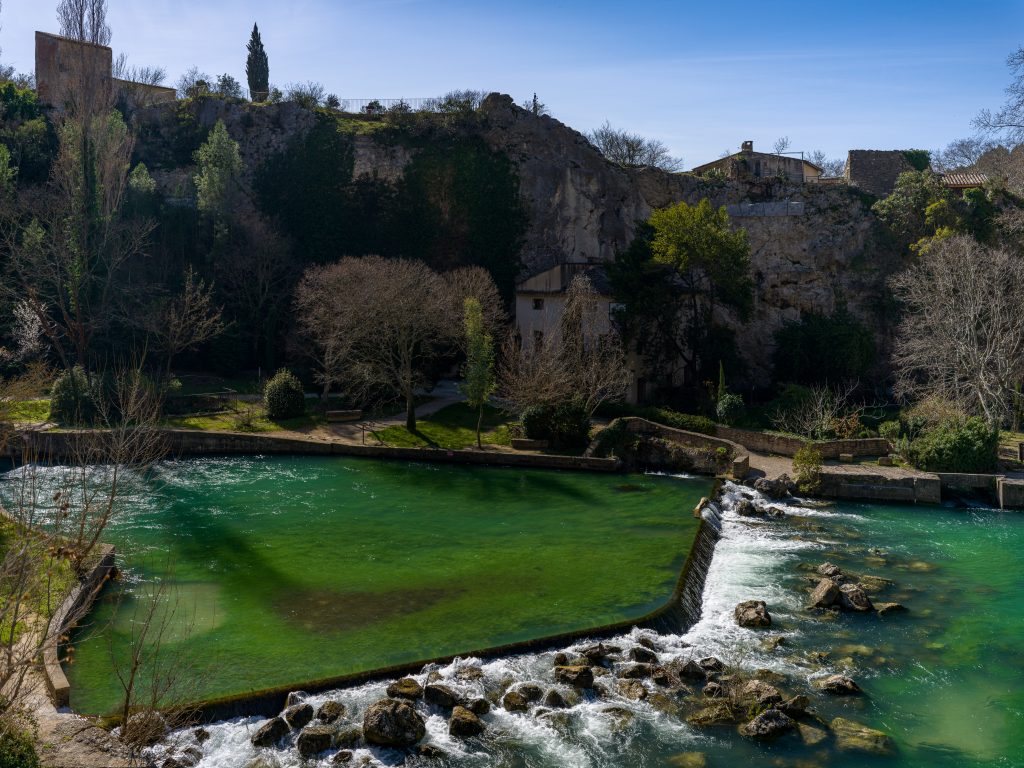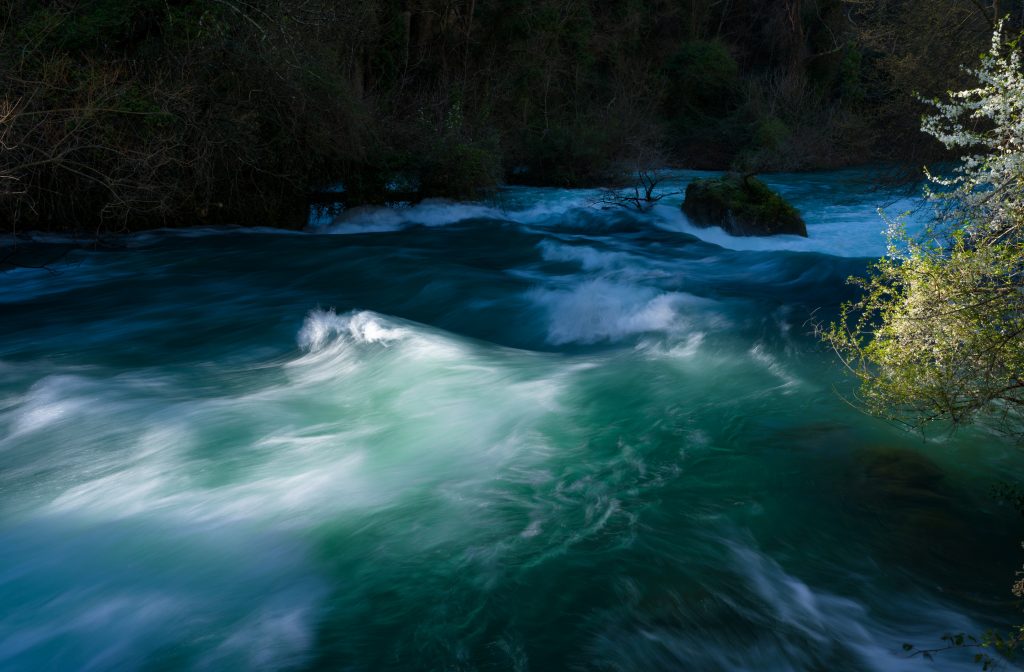Enjoying lasting clear skies courtesy of the mistral, we used our following morning to raid an open air market in the old Aix. There, charmed by the authentically friendly vibe and blinded by our willing tourist blinkers, we collected a fantastic saucisson for the road, a Tunisian zlabia—extremely sweet honey-based pastry which I devoured on the spot—and a couple of slices of pâte de fruit, traditional fruit paste with esoteric flavors of tomato, basil and herbs of Provence, to bring back home. The jovial vendor respectfully asked how thick the slices should be and having received our order, launched into a long monologue on how to best conserve the delicacy. It is only in hindsight that the reason behind his advice dawned on us: despite the price tags which we had managed to ignore, the fruit of his labor, pardon the pun, sold for roughly the price of gold. A kilo of the nectar was worth about the same as the Ox’s 3/4 tank fill-up, around ninety euros, and in retrospect I’m not sure which is more shocking. Our slices must have been the fattest he had cut all week and he’s probably retired by now! But as I can now report after we brought the treasure back to Brooklyn, it was simply incredible!
We then headed back towards Sainte-Victoire for our revenge hike. I had initially planned an ambitious climb all the way to the Croix de Provence, symbolic summit of the mountain although the eastern Pic des Mouches is actually slightly higher, but a few variables were not in our favor: a cold wind still blew hard and the second part of the hike along an exposed ridge would have been quite chilly and unpleasant; our knees had sent us both a telegram requesting a break; and most importantly, it was getting late and we knew that our typical hiking pace in a new environment can fluctuate between turtle-slow and flat-out-racing-earth-worm. Not that we are lazy, mind you, but Marie and I both progress at idle when in discovery mode, me shooting furiously and her smelling, touching, examining and engaging as many new friends as she finds new plants.
Sainte-Victoire is an immense slab of white limestone that rises majestically in the sky of Provence. It is much longer than it is wide, some eleven miles in length, no more than a mile across and over thirty-three hundred feet high. It is also not symmetrical; seen from one of its extremities, the mountain exhibits a very gradual slope towards the ridge on one side which then plunges back down almost vertically, as if a giant hand had pushed hard from the north to tilt the whole range. I imagine a godly wedge, designed to hold a mighty northern door which never closed.
My youth’s CAF outings were split between the Calanques and Sainte-Victoire, with the exception of a memorable week-long mountain climbing course I attended in the Alps’ Massif des Écrins, around the hamlet of La Chapelle-en-Valgaudémar. Base camp had been set up in a village campground, complete with a kitchen tent where I greedily helped myself to hearty food for the climbs, lard, saucisson, nuts, dried fruit and condensed milk(!), and we would set out on day-long or overnight climbs.
I have incredibly fond memories of that week, far away from parental reassurance for the first time in my life, among adults, free and eagerly learning the ropes. Pardon another pun. I had rigged myself an improvised fishing line and caught a trout in the village stream. I gutted and cleaned the poor thing the best I could, trying to remember what I had seen in movies, and cooked my prize on a small wood fire next to my tent, first-ever self-catered meal. I closed off with a bowl of strawberries picked in a nearby field and served with white sugar splashed by half a glass of red wine stolen from the kitchen tent. I remember overnighting at altitude in a refuge de haute montagne or mountain hut, the Refuge du Pigeonnier, sleeping on a bare-bones floor mattress among other climbers and woken up well before dawn by the tickle of the hut keeper’s goat delicately licking my feet. The climbs, well, the climbs were brilliant. Days progressed slowly, almost languorously. Nothing happens fast, in the mountains. Matching the slow and methodical foot placement of experienced mountaineers on approach hikes, learning to walk with crampons, to progress in a cordée, tied up with a climbing partner but never stopping to set and remove protections, practicing self-arrests with my ice axe on steep snowy slopes, feeling the debilitating effect of even a modest altitude, it all felt like I was finally home.
On Sainte-Victoire, on the other hand, things were faster-paced and often trickier. The climbs were eerily aerial and exposed, and even with absolutely no fear of heights—how things have changed—I was often humbled by the precipice opening between my feet.
I know of no other place on earth that can match Sainte-Victoire in terms of beauty, sheer verticality, exceptional hiking and climbing opportunities and quality of light—although Cape Town’s Table Mountain is not far behind, but I have not climbed there, and when I hiked up India Venster with my late father-in-law Henri back in 2011, height and exposure were already taking a toll I had not previously known.
So Marie and I stopped at the Parking du Bouquet, almost flush with the cross that sits at the very top, and gave ourselves carte blanche, aiming loosely up along the main path, picnic loaded, eyes open and hearts already fulfilled. The impressionists were fond of majestic Sainte-Victoire and the golden light that often bathes it. Cézanne and Renoir in particular have painted its silhouette over and over again. I attempted to do the same with my camera, although time was relatively short and to paint or photograph well, one must pause and let the world sink in.
We climbed through the garrigue surrounded by thyme, rosemary and cades. When the time came for our lunch, we sat facing south, away from the wind’s bite, and hungrily ate our classic saucisson, butter and pickle sandwiches, gazing at the masterful painting around us.
Although not very high on the slope, we could see as far as the Étang de Berre just beyond Marseilles, to the southeast, and Sainte-Baume to the south. The sky was a crisp blue, the white walls at our back shone brightly, lower slabs of stone were marbled with orange slices, flowers were cheerfully greeting an early spring all around, things were as they should.
I wished, for a moment, that time would stop.
The following day we launched into a northwesterly drive through Provence, towards la Fontaine-de-Vaucluse. My dad was born in the small French town of Sorgue in the Vaucluse département, and later migrated to nearby Avignon, where he claimed to have dived from the broken bridge made somewhat famous by a song. For clarity, French départements are less important than US States and maybe more akin to US Counties, although their establishment goes back to the Revolution. The country is divided into ninety-six départements, the visit of which we tallied avidly as kids. There are also five overseas territories but I have only had the chance to stop in Martinique and Guadeloupe. New Caledonia, visited on board Club Med Two while in the South Pacific, is not a département and instead considered an overseas territory. There is an upcoming remastered video from those amazing days.
Sorgue is named after the river flowing through it. The source of that river is a gigantic spring which spurts out from underground less than fifteen miles away. A small village was built around that emergence and is called Fontaine-de-Vaucluse, or the fountain of the department.
Everything about the Fontaine-de-Vaucluse seems extravagant, as though exaggerated by an overzealous editor. Its depth of one thousand and ten feet was only confirmed in 1985 by a remote-controled robot, after prestigious diver Jacques Cousteau and his team had failed to reach the bottom, brushing up with death along the way because of an air compressor issue. It is the only exit point of a vast underground reservoir collecting water from nearby Mont Ventoux and other ranges and which spans close to seven hundred square miles. The spring’s menacingly high overhanging cliff juts up some seven hundred and fifty feet into the air. This is the world’s fifth largest such spring and its annual flow is in excess of twenty-two billion cubic feet of pristine output. The water flows an extraordinary emerald green and the river’s character is molded by the seasons. It barely trickles through the rocks at its origin in late summer, but gushes impetuously in spring.
We drove west past Aix, angled north, crossed the Durance river in Cavaillon, melon capital of France, and doubled back towards the east through agricultural land. It was a touch past noon when we arrived at our destination and we spur-of-the-moment stopped to grab lunch at a restaurant overlooking the water, with an acceptable—at best—culinary outcome. We then walked along the left bank on the tourist trail, not exaggeratedly busy at that time of the year, following the river to its source.
I had not brought a tripod along and could only risk a few handheld slow shutter speed shots, but I hope they speak for themselves. The beauty of that river is otherworldly.
On the drive back, we discussed the next day’s plan. Our time around Aix had come to an end and we would be transiting back towards Côte d’Azur to roam from our Vence pied-à-terre. The weather forecast had turned ugly again and a warning for high wind and heavy rain made our itinerary choice a gamble. I had wanted to take backcountry roads to the north instead of the southern—and much faster—highway, in order to cruise through the Gorges du Verdon, push on until Coursegoules and drop down into Vence from the mountains instead of following the coast.
We decided to wait and “play it by ears”, as I routinely catch myself saying, which is strange as the French jouer à l’oreille is not plural either. Time would tell.
«Retour aux Sources» Series
Want to read the entire series of stories? Start here
Already reading sequentially?
Previous story: Retour aux Sources – Part 3, Calanques






Comments
Germaine Versailles